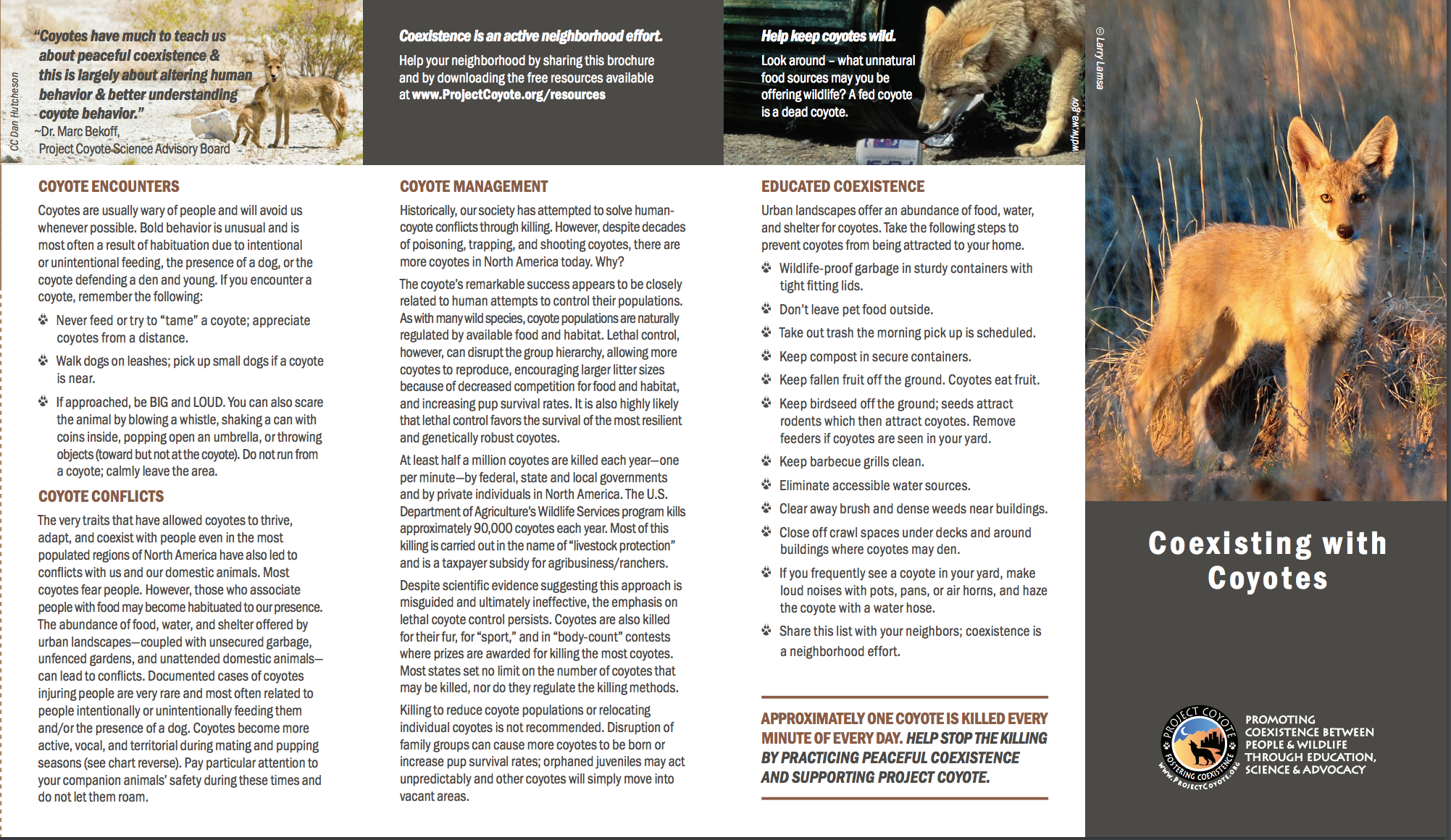Teach This Poem, though developed with a classroom in mind, can be easily adapted for remote learning, hybrid learning models, or in-person classes. Please see our suggestions for how to adapt this lesson for remote or blended learning. We have also noted suggestions when applicable and will continue to add to these suggestions online.
Read a brochure from Project Coyote here.
The following activities and questions are designed to help your students use their noticing skills to move through the poem and develop their thinking about its meaning with confidence, using what they’ve noticed as evidence for their interpretations. Read more about the framework upon which these activities are based.
-
Warm-up (quick write): Think about any wild or urban animals you might occasionally see where you live or go to school. These can also be animals that you might know about from television or movies. What do you think their lives are like? How do you think their lives would have been different in the late 1800s?
-
Before Reading the Poem: Read a brochure from Project Coyote here to learn about coyotes and how we coexist with them.
-
Reading the Poem: Read the poem “Coyote” by Alexander Posey silently. What do you notice about the poem? Annotate for any words or phrases that stand out to you or any questions you might have.
-
Listening to the Poem (enlist two volunteers to read the poem aloud): Listen as the poem is read aloud twice, and write down any additional words and phrases that stand out to you.
-
Small-group Discussion: Share what you noticed in the poem with a small group of students. Based on the details you just shared with your small group, how does the poem relate to the images shared at the beginning of class? What might the coyote represent to the speaker? Why?
-
Whole-class Discussion: How does the tone of the poem change in the second half of the poem? What happens at the end of the poem? Who might the enemies be? What is the rhyme scheme in this poem, and how does that affect your reading experience? (Teachers, if your students aren’t familiar with the ballad form, consider sharing more information here.) How might rhyme play into oral tradition and memorization?
-
Extension for Grades 7-8: Read this article here. What happens next, after “the rush / of armed enemies” descends? What happens to the speaker and their community? Write the next part of the poem.
-
Extension for Grades 9-12: Read more about Native poetry here. In this address, Harjo states “it occurred to me that we have poetry ancestors. That thought was a door that made a fresh path of understanding. Each of us carries human ancestors within us. The DNA spiral is ancestral stories and songs. Even the stones, plants, elements, and creatures have ancestors. Each poem has ancestors, and maybe even an origin story.” With a partner or small group, create a visual map that connects Posey to other poets. Or, create a visual map of your own poetry ancestors. Share your findings with your classmates.
In an essay and poetry portfolio on Native poetics, Natalie Diaz writes, “Native poetry is a crafted, honed, learned art, requiring skill. It is a choice made with great consideration—to use the white space that once silenced us as a platform to speak loudly.” Read more.
This week’s poetic term is ballad, referring to a traditional form that presents as a plot-driven song. Read more.

